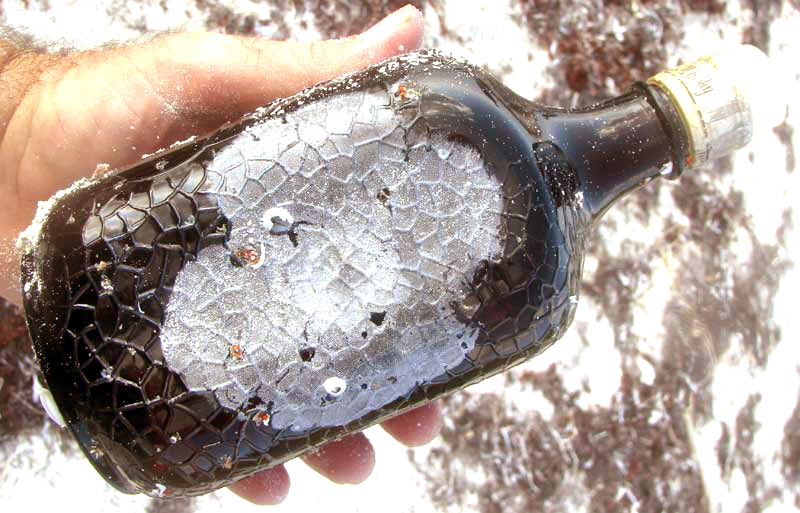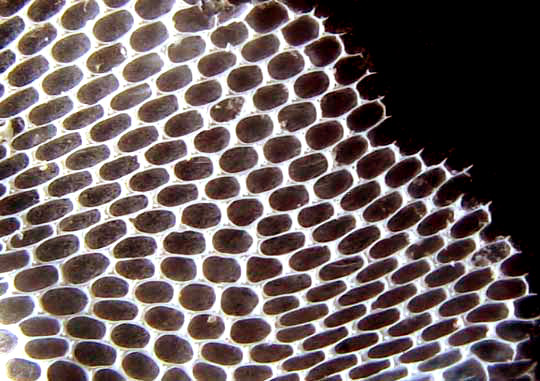Excerpts from Jim Conrad's
Naturalist Newsletter

from the August 7, 2011 Newsletter issued from Mayan Beach Garden Inn 20 kms north of Mahahual; Caribbean coastal beach and mangroves, ~N18.89°, ~W87.64°, Quintana Roo state, MÉXICO
BOTTLE BRYOZOAN
A black whisky bottle washed onto the beach. It bore barnacles, so it had been floating a long time. Also part of it was covered with a white coating, as shown above. The bottle face's webbed pattern is molded into the glass. However, the white film consits of a single layer of tiny, quadrangular cells, as seen below:

Clearly this is a living thing establishing itself across the bottle's face, and it's fascinating to think how the cells forming at the edge "know" how far to grow before branching, and where the branches must hook up to form a cell's wall. In the picture you can see the opposite branches of some cell walls projecting toward one another.
Though I'm a rank amateur with regard to the ocean's living things, mostly by the process of elimination I'm guessing that what we have here is a bryozoan, maybe even the Coffin Box or Lacy Crust Bryozoan, Membranipora membranacea
At the above site we learn that this species is an invasive, a weed originally from Europe but now in the Americas, and that it harms larger forms of algae. The site says that the bryozoan "Forms a crust on algae blocking light needed for photosynthesis and making the algal body stiff and brittle, causing it to break when exposed to waves."
Bryozoans are colonial animals, sometimes referred to as moss animals. Some colonies are bush-like or fan-like (sea-fans are bryozoans), or sheet-like, forming lettuce-like structures. Ours is the most common marine form, the encrusting type. The cellular structure on our bottle, then, is the colony's exoskeleton composed mostly of calcium carbonate, or limestone. Each cell of the exoskeleton holds a tiny animal, the zooid.
Wikipedia provides a good overview of bryozoans at https://en.wikipedia.org/wiki/Bryozoa.